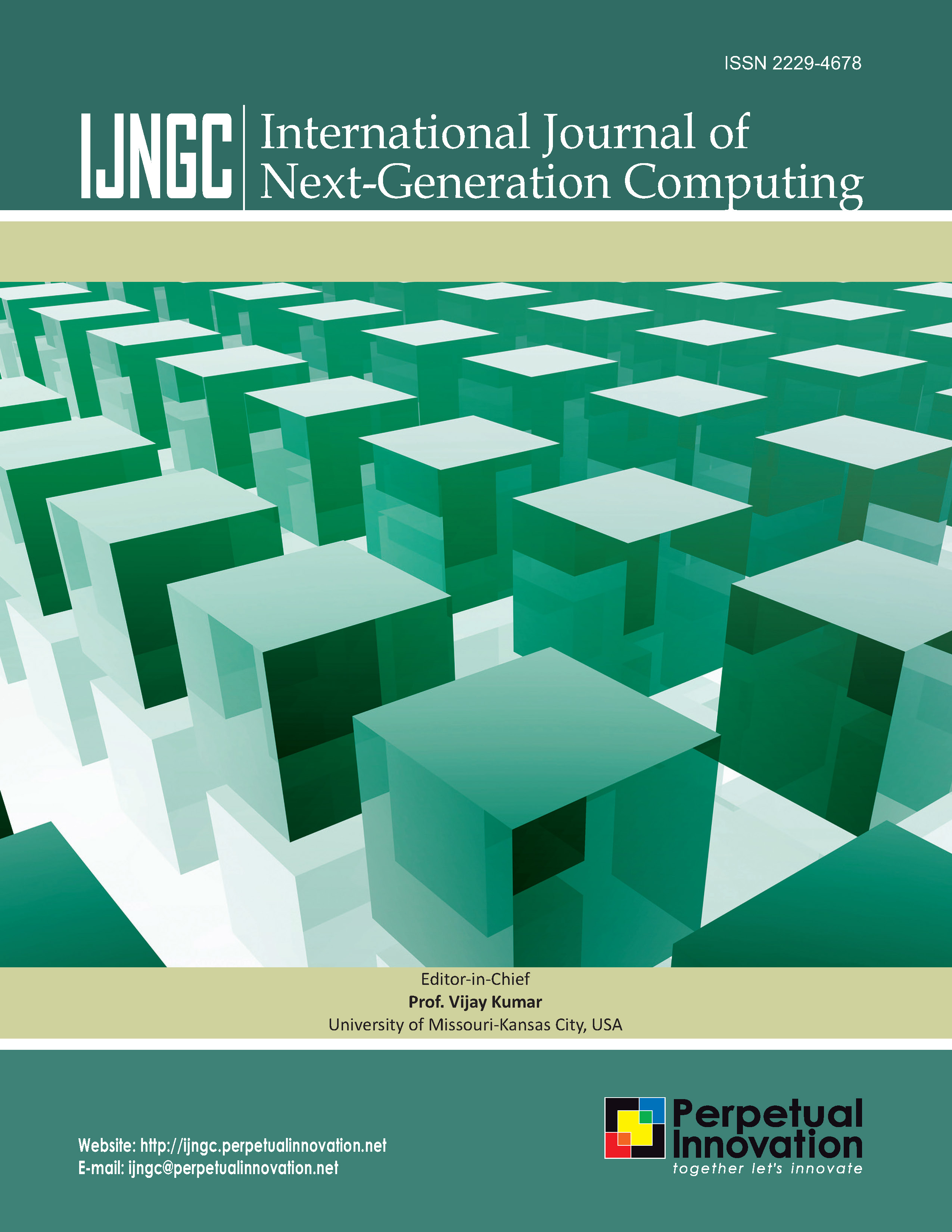Change Detection Analysis of Land Cover Features using Support Vector Machine Classifier
##plugins.themes.academic_pro.article.main##
Abstract
Remote sensing (RS) is crucial for geographical change studies such as vegetation, forestry, agriculture, urbanization, and other land use/land cover (LU/LC) applications. The RS satellite imagery provides crucial geospatial information for observation and analysis of the entire earth's surface. In the proposed study, Multitemporal and multispectral Landsat satellite imagery is used to feature extraction of LU/LC of the Haridwar region. The preprocessing of used imagery is essential for accurately classify the land cover features using image preprocessing methods (geometric correction, atmospheric correction, and image transform). It helps to classify and change detection of land cover features accurately. After preprocessing of imagery, land cover features are divided into seven feature classes using the region of interest (ROI) tool with google earth image and topographic map. The Support vector machine (SVM) is a supervised learning method used to classify the land cover features of the study area. SVM classifier accurately classifies the imagery of the different years 2017, 2010, 2003, and 1996 with 90.00%, 82.75%, 86.37%, and 83.38% accuracy. The post-classification method is used to detect changes in land cover features. From 1996 to 2017, orchards and vegetation are rapidly decreased by 13,698.36 ha and 1,638.81 ha due to unplanned development in urban and industrial areas of the Haridwar region. The resultant LU/LC change information is important for monitoring and analyzing land cover changes of the study area.
##plugins.themes.academic_pro.article.details##

This work is licensed under a Creative Commons Attribution 4.0 International License.
How to Cite
Saurabh Kumar, & Shwetank. (2023). Change Detection Analysis of Land Cover Features using Support Vector Machine Classifier. International Journal of Next-Generation Computing, 14(2). https://doi.org/10.47164/ijngc.v14i2.384
References
- Chuan, Z., Fawang, Y., Haixia, H., and Hongcheng, L. 2014. Study on the forest vegetation restoration monitoring using hj-1a hyperspectral data. In IOP Conference Series: Earth DOI: https://doi.org/10.1088/1755-1315/17/1/012082
- and Environmental Science. Vol. 17. IOP Publishing, 012082.
- Coulter, L. L., Stow, D. A., Tsai, Y.-H., Ibanez, N., Shih, H.-c., Kerr, A., Benza, M., Weeks, J. R., and Mensah, F. 2016. Classification and assessment of land cover and land use change in southern ghana using dense stacks of landsat 7 etm+ imagery. Remote Sensing of Environment 184, 396–409. DOI: https://doi.org/10.1016/j.rse.2016.07.016
- Garcia, P. and Perez, E. 2016. Mapping of soil sealing by vegetation indexes and built-up index: A case study in madrid (spain). Geoderma 268, 100–107. DOI: https://doi.org/10.1016/j.geoderma.2016.01.012
- Ghebrezgabher, M. G., Yang, T., Yang, X., Wang, X., and Khan, M. 2016. Extracting and analyzing forest and woodland cover change in eritrea based on landsat data using supervised classification. The Egyptian Journal of Remote Sensing and Space Science 19, 1, 37–47. DOI: https://doi.org/10.1016/j.ejrs.2015.09.002
- Jime´nez, A. A., Vilchez, F. F., Gonza´lez, O. N., and Flores, S. M. M. 2018. Analysis
- of the land use and cover changes in the metropolitan area of tepic-xalisco (1973–2015) through landsat images. Sustainability 10, 6, 1860. DOI: https://doi.org/10.3390/su10061860
- Johansen, K., Phinn, S., and Taylor, M. 2015. Mapping woody vegetation clearing in queensland, australia from landsat imagery using the google earth engine. Remote Sensing Applications: Society and Environment 1, 36–49. DOI: https://doi.org/10.1016/j.rsase.2015.06.002
- Khan, S. H., He, X., Porikli, F., and Bennamoun, M. 2017. Forest change detection in incomplete satellite images with deep neural networks. IEEE Transactions on Geoscience and Remote Sensing 55, 9, 5407–5423. DOI: https://doi.org/10.1109/TGRS.2017.2707528
- Lafarge, F., Descombes, X., and Zerubia, J. 2005. Textural kernel for svm classification in remote sensing: Application to forest fire detection and urban area extraction. In IEEE International Conference on Image Processing 2005. Vol. 3. IEEE, III–1096. DOI: https://doi.org/10.1109/ICIP.2005.1530587
- Lin, C., Wu, C.-C., Tsogt, K., Ouyang, Y.-C., and Chang, C.-I. 2015. Effects of at- mospheric correction and pansharpening on lulc classification accuracy using worldview-2 imagery. Information Processing in Agriculture 2, 1, 25–36. DOI: https://doi.org/10.1016/j.inpa.2015.01.003
- Majdaldin, R., Osunmadewa, B., Csaplovics, E., and Aralova, D. 2016. Remote sensing- based vegetation indices for monitoring vegetation change in the semi-arid region of sudan. In Remote Sensing for Agriculture, Ecosystems, and Hydrology XVIII. Vol. 9998. SPIE, 609–617.
- Maxwell, A. E., Warner, T. A., and Fang, F. 2018. Implementation of machine-learning classification in remote sensing: An applied review. International Journal of Remote Sens- ing 39, 9, 2784–2817. DOI: https://doi.org/10.1080/01431161.2018.1433343
- Pervez, W., Khan, S. A., Hussain, E., and Amir, F. 2017. Satellite based seasonal land use classification and change detection analysis of landsat-8 operational land imager. In MATEC Web of Conferences. Vol. 120. EDP Sciences, 09004. DOI: https://doi.org/10.1051/matecconf/201712009004
- Rujoiu-Mare, M.-R. and Mihai, B.-A. 2016. Mapping land cover using remote sensing data and gis techniques: A case study of prahova subcarpathians. Procedia Environmental Sciences 32, 244–255. DOI: https://doi.org/10.1016/j.proenv.2016.03.029
- Siregar, V., Prabowo, N., Agus, S., and Subarno, T. 2018. The effect of atmospheric correction on object based image classification using spot-7 imagery: a case study in the harapan and kelapa islands. In IOP Conference Series: Earth and Environmental Science. Vol. 176. IOP Publishing, 012028. DOI: https://doi.org/10.1088/1755-1315/176/1/012028
- Wang, G., Liu, J., and He, G. 2013. A method of spatial mapping and reclassification for high- spatial-resolution remote sensing image classification. The Scientific World Journal 2013. DOI: https://doi.org/10.1155/2013/192982
- Yuan, F., Sawaya, K. E., Loeffelholz, B. C., and Bauer, M. E. 2005. Land cover classification and change analysis of the twin cities (minnesota) metropolitan area by mul- DOI: https://doi.org/10.1016/j.rse.2005.08.006
- titemporal landsat remote sensing. Remote sensing of Environment 98, 2-3, 317–328.
- Zhang, J., Jia, L., Menenti, M., and Hu, G. 2019. Glacier facies mapping using a machine- learning algorithm: The parlung zangbo basin case study. Remote Sensing 11, 4, 452. DOI: https://doi.org/10.3390/rs11040452





